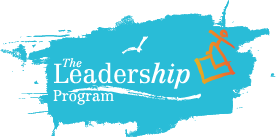As the pandemic caused disruptions to in-person learning, economic stress, and the tragic fatalities of beloved community members, schools across the country are feeling anxious with how to meet students’ needs as they return to physical classrooms. Despite many students and educators being fully vaccinated and COVID-19 vaccines being more readily available, school administrators and educators are grappling with how to meet the spectrum of needs for the whole child this school year.
Many educators are asking themselves and one another, how do we begin to reunite within our school community? How can we work to cultivate a sense of renewed connection and community that can foster a sense of belonging for our students and staff?
In addition to prioritizing the physical health and safety of students and staff by implementing multilayered mitigation strategies, schools must also consider the mental health issues and social-emotional implications of the pandemic, including rising rates of depression and anxiety among young people.
Many adolescents have experienced long-term disconnection and isolation, loss of routines, loss of relationships with peers and adults, and loss of in-person social interactions due to the pandemic. New research suggests many young people, likely 30 to 40 percent, have experienced negative impacts on their mental health or social and emotional well-being during the pandemic.

Social and emotional learning programs can provide a road map for the return to our school buildings and after school programs. Through the implementation of social and emotional learning programs, we can create learning spaces that are rooted in care, focused on the whole child, and provide support to teachers and other staff.
While SEL programs do not replace needed mental health services, SEL programs can promote mental wellness in many ways. By promoting social and emotional skill development, SEL programs help to cultivate protective factors to shield against the risks of mental health.
Social and emotional learning programs work to foster transformative growth in the areas of:
- Self Awareness
- Self Management
- Social Awareness
- Relationship Skills
- Responsible Decision Making
These five core competencies will allow young people and adults to repair, rebuild, reaffirm, realign, and reclaim their pre-pandemic mission, norms, routines, and relationships. With a focus on continued SEL skill development, the entire school community will benefit from deeper connections to one another and a greater sense of community. In turn, a renewed sense of belonging can be reignited. One that can serve as a healing balm after so many different lived experiences felt during the pandemic.
While the focus of our energies on COVID updates, vaccines, masks, and physical health will continue to be top of mind, we must never lose sight of the full face underneath the mask and their less visible needs.
In order to not just survive but thrive at school, our students need to feel safe socially and emotionally as much as they need to feel safe physically. As we strive to center the full humanity of ourselves and our students, the implementation of SEL programs will allow us to meet our students’ needs and the moment we are in this school year as the benefits of SEL programs are vast and vivid.
When you can fully connect with yourself and your students, then you are well-positioned to embrace the school year ahead and be fully prepared for whatever comes your way. Social and emotional learning programs are the roadmaps we need to work towards the path of wellness and healing in our school communities.
Last week one of our students reached out via email to a staff member to see if they were going to return next month for after school programming. Why of course, just not sure which type of club we will have yet, they replied.
The student expressed simultaneous happiness and relief. You see, it is the connection, it is the relationships, it is the sense of belonging that our young people are craving. And it is the social and emotional learning programs that can provide this. How will you provide a focus on SEL skills to your students this year?



Comments [0]
Click here to read/write comments